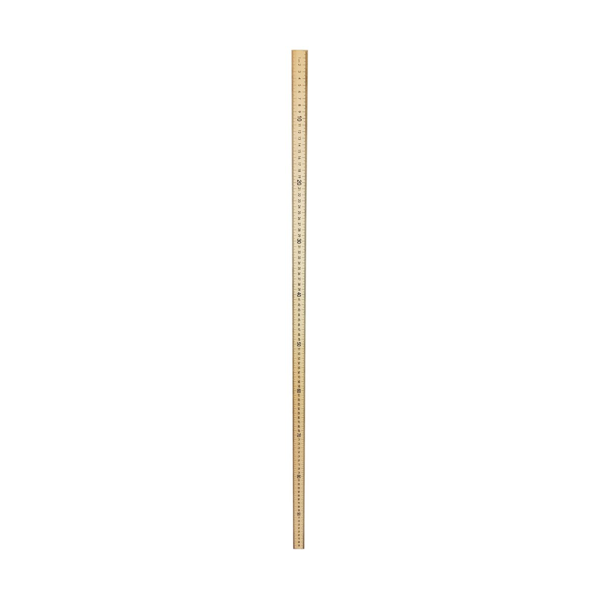

I guess if you were awesome you could make it so that both fingers slide together, but you would have to keep everything completely even. The one that is further from the center of mass (where ever that center of mass is) will slide and the one that is closer will stick. This means that if I push the two fingers in together, one will stick and one will slip. The finger that is closer to the center will have a greater frictional force on it. The harder they are pushed together, the greater the frictional force.

If I use the following model for friction: Here N is the force the two surfaces (finger and meter stick) exert on each other. Where am I going with all this? Well, the force the finger pushes on the stick is related to the frictional force between the finger and the stick. Removing the gravity term, you can see that there is a relationship between the forces the two fingers exert on the meter stick. Here I explicitly put the distance between mg and the point about which the torques are calculated as (0). This would give the following expression for torques:
METER STICK FULL
If I used the full vector nature of torques, this would come out automatically, however here I will call torques that want to twist the thing counterclockwise positive and torques that twist clockwise as negative.

If I want the torques to add up to zero, then at least one of them will have to be negative. One thing I did not mention earlier is the sign of torques. Let me call x 1 and x 2 the distances the fingers are from the center. I can do this by writing down the expression for the total torque about the center (I could do this about any point, but I will choose the center). If there are two variables (the two fingers) then I would need two equations to solve the problem. However, this expression is not enough to find out how much force the two fingers push on the meter stick. If I label the forces from the fingers to be F 1 and F 2 then the following must be true for the y-components of force:Īgain - remember I said that this is for the y-components so they are NOT vectors. Also, the forces from the fingers are not equal because they are not equally spaced. If this weren't true, the total force in the vertical direction would not be zero and the thing would not be in equilibrium. In this diagram, the two forces from the fingers add up to the gravitational force.
METER STICK FREE
What is important in this diagram? First, if you can't remember anything about free body diagrams (that is what it's called) check out my free body diagram post. Let me draw these r vectors on the diagram. Force C would be the next hardest and force A wouldn't do anything, right? The torque about the hinge is going to be the force times the distance from the point about which we are calculating the torque (the hinge) time the sine of the angle between the vector from the hinge to the force. Which one would be the easiest to open the door with? I think your experience would say B. In this diagram, imagine you were trying to open this door by pushing at the location and direction of the three forces (A, B, and C). That makes it easier for intro students to calculate (don't need the cross product). However, in this case you can just deal with it's magnitude. For this case it doesn't matter what point you use since it is not rotating about all points. To calculate the torque, you need to pick a point about which to calculate. It is what causes it to change an objects rotational motion. Essentially, the torque is the "rotational force". I am surprised I never made "basics" out of this. It was for the torque by rotating balls in fantastic contraption. Didn't I talk about torque before? Yes, I did.


 0 kommentar(er)
0 kommentar(er)
